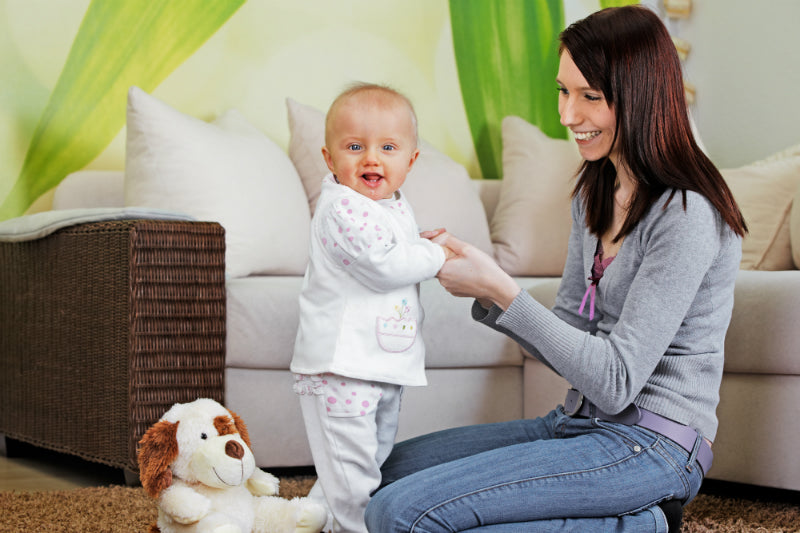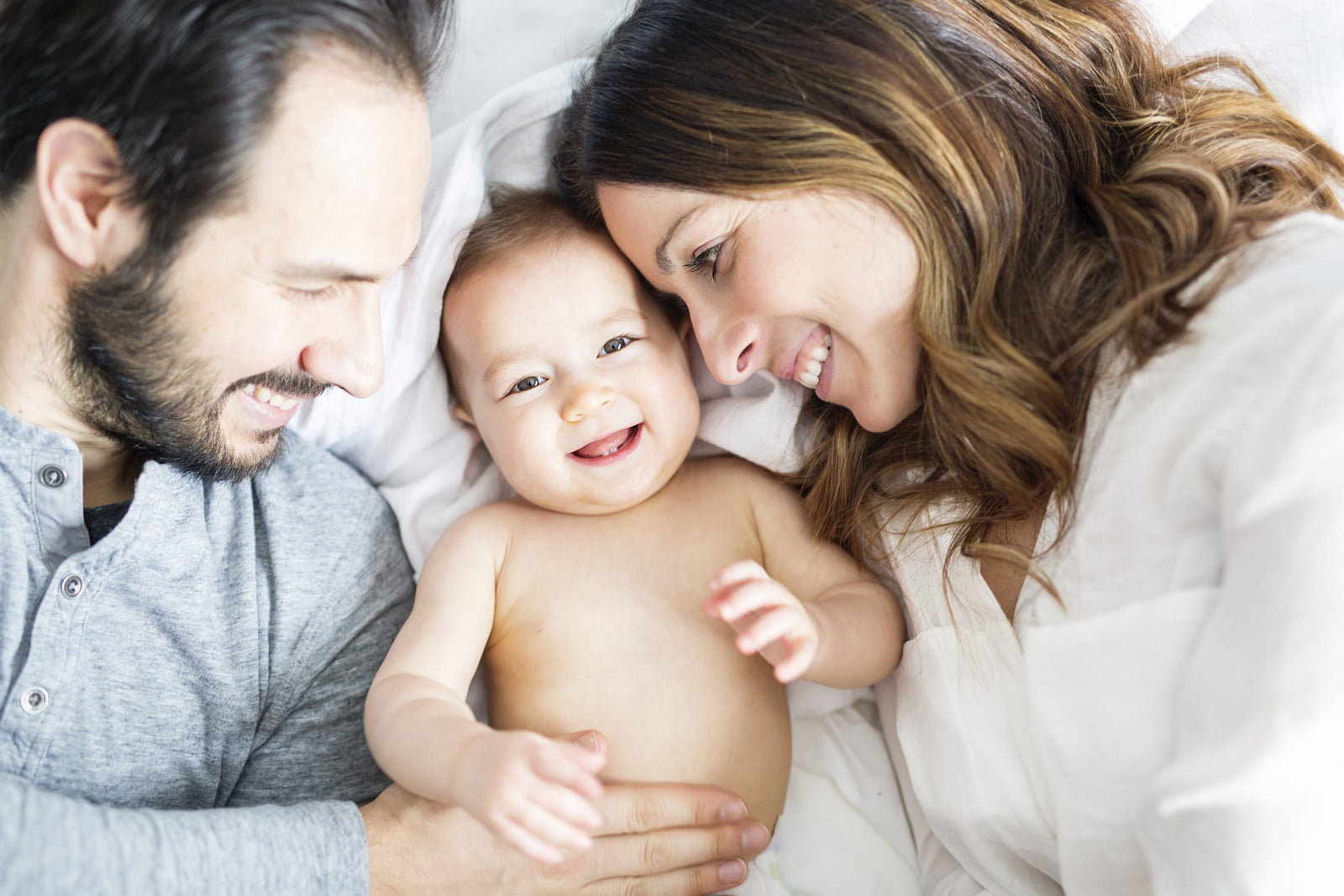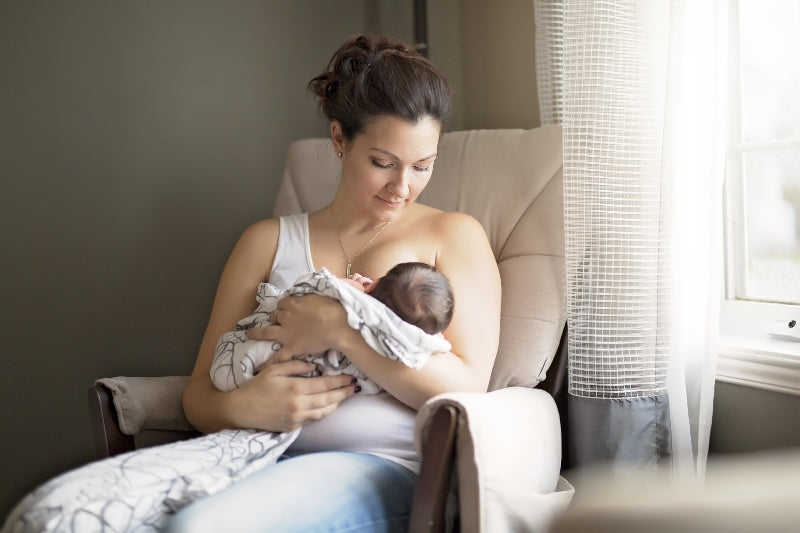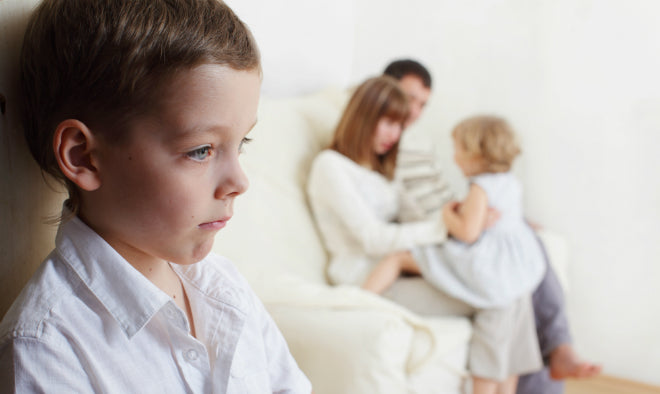" On the way to the first step "
Still a little wobbly, but with an incredible amount of pride in his eyes, your baby dares to take his first steps. At this point in their development, the once clumsy little one gradually becomes a toddler.
Exploring the world step by step
For you as parents, this is more than just a milestone. It is a turning point. As soon as your child has realized the incredible possibilities that are now opening up, a new and usually incredibly exciting phase of life begins.

Learning to walk in nature
But it has also taken some time to get to this point. Many parents wonder whether their child is developing well. Especially when their peers are already busy walking around and their own baby is not thinking about standing on their own two feet. Never worry too much about this point. A child develops in stages. What's more, your little sunshine will never go through several major stages of development at the same time. So if your child is still wobbly on its feet, it may already be talking more than others or be ahead of other children in terms of food intake.

Babies develop at different speeds
In the following, you will therefore only read about guideline values that give you a point of reference when it comes to a baby learning to walk. Children develop individually.
The leg muscles must first develop
In the first few months, the leg muscles are simply not yet developed enough to carry the little body. But this will change. If you take a closer look, you will see how often your little sunshine lifts, kicks and moves its legs. These are all unconscious but very effective exercises to strengthen the muscles. You can even give your baby a little support.
A play arch, for example, ensures that the little diaper wearer not only uses his hands, but also wants to move the many interesting things on it with his feet.
Around the fifth month, your baby can already stand on her thighs with your help. This is quite a fun time. Because your little one is discovering the ability to hop. Your little one pushes off from your thighs with their legs and has a lot of fun doing so. Some parents use so-called baby bouncers. These are frames that are clamped into the door frame, for example, and the baby is placed in a device. The elastic straps support the bouncing.
However, experts view this with skepticism. It is better to let your little angel bounce on your legs. This not only strengthens the little legs, but also their confidence in each other.

Pulling up on objects is the beginning of learning to walk
First attempts at standing
Around the ninth and tenth month of life, toddlers discover the ability to pull themselves up on objects. This is an exciting time. Make sure that there is no furniture or other objects nearby that are wobbly and could topple over.
That's where they hold on tight and beam from both cheeks. Now it's only a matter of a few weeks before your little angel takes their first steps.
Are baby walkers useful when a baby is learning to walk?
Parents often come across products advertised as so-called baby walkers. They supposedly help babies to take their first steps. However, please refrain from using devices that you have to place your child in. These walking aids are more likely to hinder natural development than support it. In any case, little ones do not learn to walk in them. A baby wants to walk and not just slide back and forth.

A baby walker as a learning aid
On the other hand, pushing aids or so-called pushchairs have proven to be positive for learning. They help babies learn to walk. Your little one can push these devices in front of them and practise taking their first steps. It is important that the wheels do not slide too easily.
Tentative steps along the furniture
Around the first birthday, you will experience a miracle. Your baby will walk! The first clumsy steps are taken along the familiar furniture. At first, your little one tentatively pushes their feet across the floor. Later, they will make their first real attempts at walking. And the speed at which they do so increases considerably. The diaper wearer now scours the room at lightning speed. When the furniture no longer offers any support, he continues on all fours.
Now, of course, you are in demand. Because the first attempts to walk without help are the last step towards learning to walk.
First of all, you will hold the baby's hands and support it as it walks. Now encourage him to walk by himself. To do this, sit a few meters away on a soft but stable surface. Hold your arms wide open so that you encourage your child to come to you.
Barefoot or rather baby shoes? What is good for your little one?
Barefoot! As long as possible, let your little one walk barefoot. This is the only way to strengthen their muscles and fine motor skills. Babies who learn to walk in summer have a small advantage. They can practise their clumsy steps for hours on a soft meadow without baby shoes.
 However, you can't do without baby shoes altogether. As long as your little one is still exploring the world by crawling, we recommend the soft baby slippers. These special baby shoes protect delicate feet from the cold. You will find the knitted baby shoes for the first three months and made of soft leather for the coming months.
However, you can't do without baby shoes altogether. As long as your little one is still exploring the world by crawling, we recommend the soft baby slippers. These special baby shoes protect delicate feet from the cold. You will find the knitted baby shoes for the first three months and made of soft leather for the coming months.
 The baby shoes offer enough space so that the foot does not feel constricted and the development of motor skills is not affected. As soon as your baby wants to walk, socks with rubber stoppers are recommended. Especially when your little one takes their first steps on cold surfaces in the house, such as tiles.
The baby shoes offer enough space so that the foot does not feel constricted and the development of motor skills is not affected. As soon as your baby wants to walk, socks with rubber stoppers are recommended. Especially when your little one takes their first steps on cold surfaces in the house, such as tiles.
Really sturdy shoes are only an option when the child is able to walk well. But then, of course, parents ask themselves again: are baby walkers really necessary?
How important are walking shoes?
Baby walkers are recommended as soon as the child wants to explore the world on its own two feet. But here too, of course, you need to pay attention to a few essential things. Baby walkers are special baby shoes that help babies learn to walk. It is important that the sole is soft and flexible. This is the only way the child can continue to learn to roll their feet correctly. A soft material is also important. The heel should be protected. This is why this area of the shoe is slightly reinforced. Depending on the weather and time of year, different baby walkers are available. Always make sure that the shoe is flexible.
Finding the right shoe size is not that difficult. Place your sunshine's foot on a piece of cardboard and draw a template of your child's foot. Cut it out and simply take it with you when you go shoe shopping.










